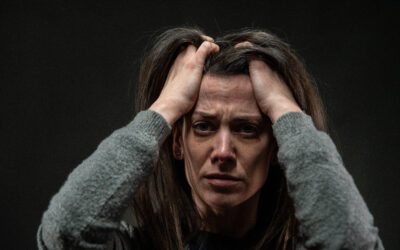Mental health, and mental health issues, aren’t straightforward; there are many mental health disorders, with different types and subsets. By learning about the different variations of mental health disorders, like bipolar disorder, you can find the treatment and support that works with the exact needs and severity of your symptoms.
Approximately 2.6% of the U.S. population have been diagnosed with bipolar disorder. With so many people being affected by the mood disorder across the country, it’s important to note the differences between bipolar 1 and bipolar 2.
Read on to learn about the basics of bipolar disorder, the differences between bipolar 1 and 2, and the treatment options to explore.
The basics of bipolar disorder
Bipolar disorder, formerly known as manic-depressive disorder, is a mood disorder that causes unusual and extreme shifts in your energy and emotional levels. These mood swings manifest as episodes, which are periods that are defined as manic highs and depressive lows.
Bipolar disorder affects your emotions as well as your behaviors, making it difficult to form and maintain personal relationships with those around you. It can also interfere with your day-to-day life by preventing you from carrying out your daily responsibilities and routines.
Symptoms of manic episodes include:
- Unusually high levels of energy
- Overconfidence and high sense of self
- Changes in sleeping and eating patterns
- Heightened irritability
Symptoms of depressive episodes include:
- Unusual increase in sleep
- Increased fatigue
- Trouble concentrating
- Suicidality
Bipolar 1 versus bipolar 2
It’s important to know that not everyone with bipolar disorder has the same diagnosis. There are two main types of bipolar disorder that your symptoms can fall into: bipolar 1 and bipolar 2.
Bipolar 1 has the highest acuity level of the mood disorder and causes extreme changes between manic and depressive episodes. Manic episodes can last up to seven days while depressive episodes can last for more than two weeks.
People with bipolar 2 experience less severe episodes than bipolar 1. Though they still have periods of depression, they have hypomania instead of manic episodes. Hypomanic episodes consist of milder versions of the symptoms.
Not only does bipolar 2 have less severe symptoms than bipolar 1, people with bipolar 2 tend to have less extreme shifts between episodes than those with Bipolar 1. The episodes also tend to have a shorter time span.
Since people with bipolar 2 have depressive episodes but less severe manic episodes, they tend to be misdiagnosed with major depressive disorder. It’s also important to note the possibility of cyclothymic disorder, which means that someone displays patterns and mild symptoms for longer than a year but doesn’t meet the criteria of a bipolar disorder diagnosis.
Diagnosing and treating bipolar 1 vs. bipolar 2
Learning about the differences between bipolar 1 and bipolar 2 will help you determine which type of the mood disorder your symptoms align with. Once you examine your symptoms, you can consult with a mental health provider to determine the proper diagnosis and the best treatment option for your exact symptoms.
Bipolar 1 and 2 can each be treated with psychotherapy and medication, but your health care provider will determine the correct medication for your specific diagnosis. When it comes to psychotherapy, your therapist can help you examine your bipolar 1 or 2 symptoms to help you alleviate their negative impact on your mental, emotional and physical well-being.
One of the best treatment options for bipolar 1 and 2 is process-based therapy. This is a personalized approach to mental health treatment that allows your therapist to track your progress and treat your entire well-being, not just your disorder. It focuses on four core processes that drive symptoms of mental health disorders, such as bipolar disorder:
- Difficulty with emotions
- Difficulty with thoughts
- Difficulty with behaviors
- Difficulty with relationships
Lightfully Behavioral Health can help determine if your symptoms align with bipolar 1 vs. bipolar 2
If you’re experiencing symptoms of bipolar disorder, it’s essential to determine if your symptoms fit a bipolar 1 or bipolar 2 diagnosis to ensure that you’re receiving the best treatment for your needs. That’s where we come in.
You can find the help you need for your bipolar 1 or Bipolar 2 symptoms with our process-based therapy in our four programs: Residential Treatment, Virtual Intensive Outpatient Program (vIOP), Intensive Outpatient Program (IOP), and Partial Hospitalization Program (PHP), also called our Day Treatment Program.
Change is possible. When you’re ready to take the first step toward treating bipolar disorder, reach out to our Admissions Concierge Team. We’ll take the next steps together, toward the fullest, brightest version of you.





